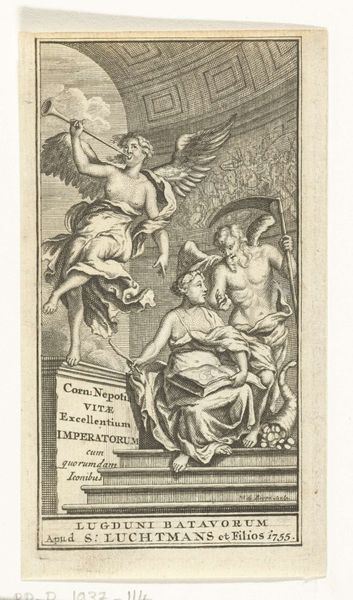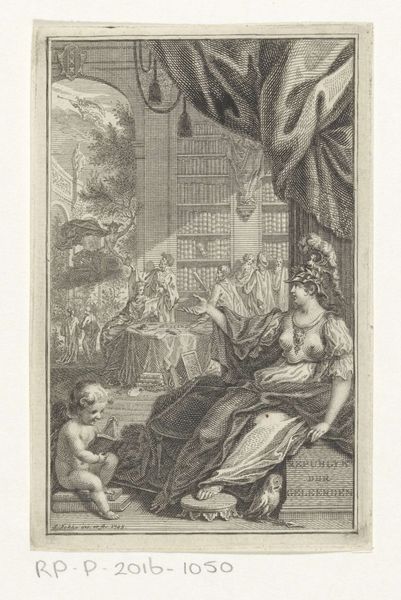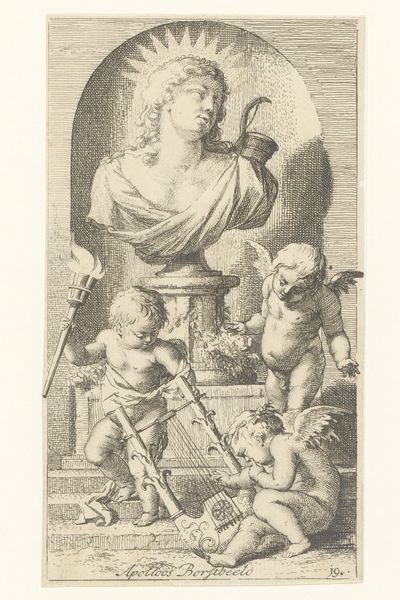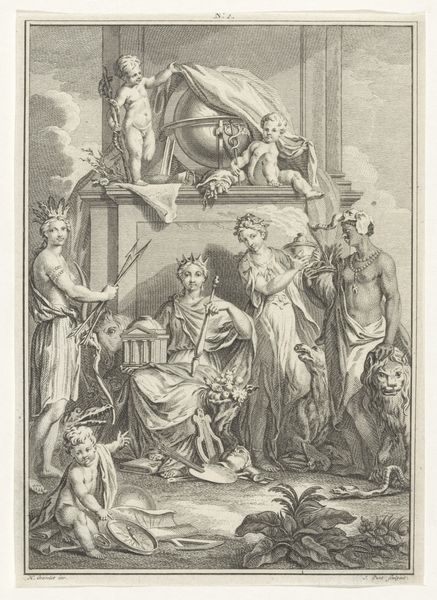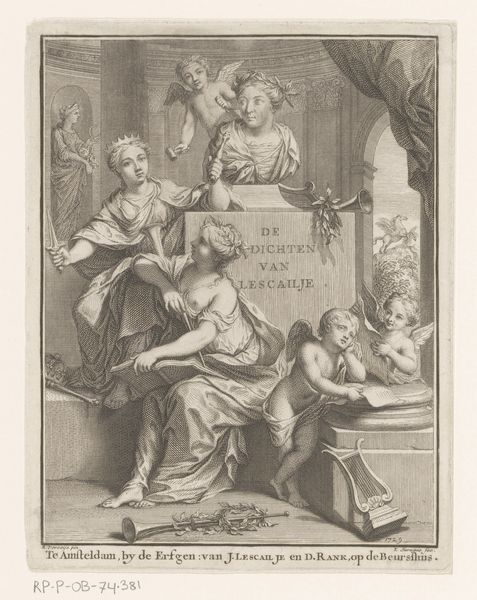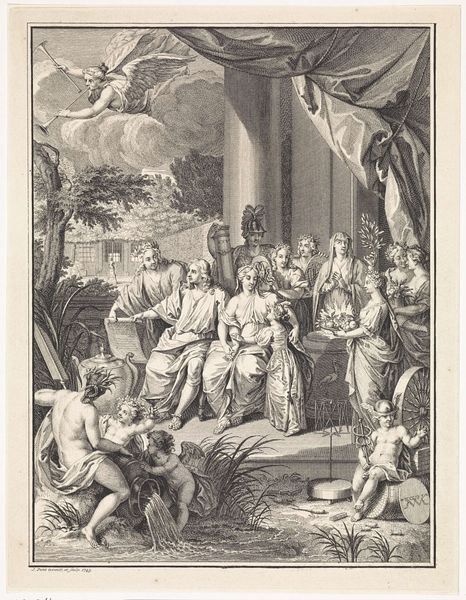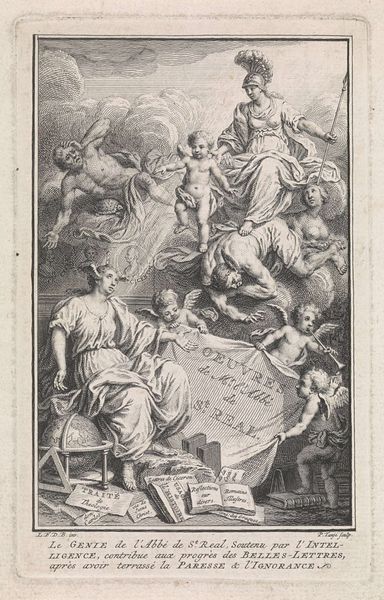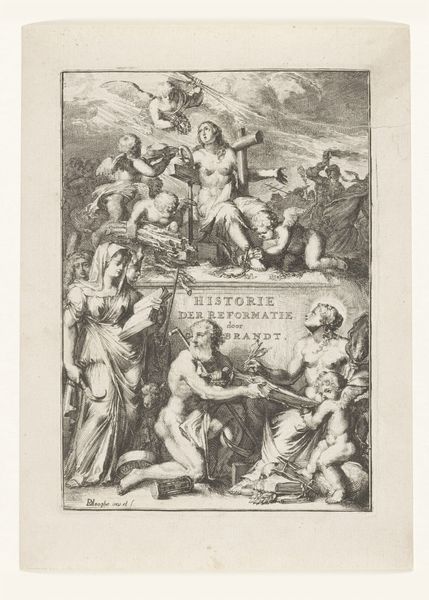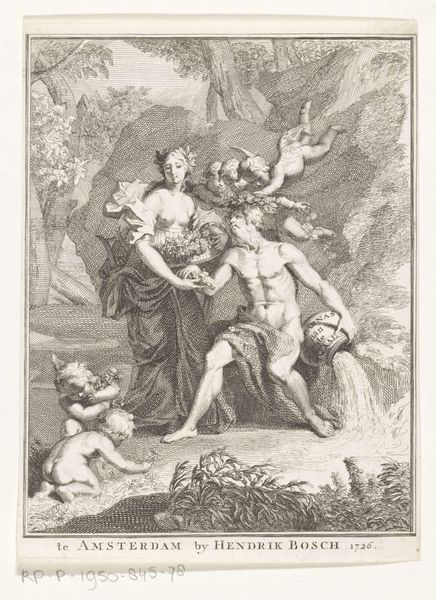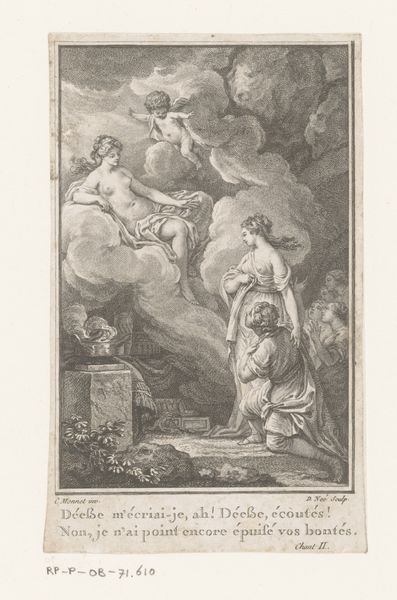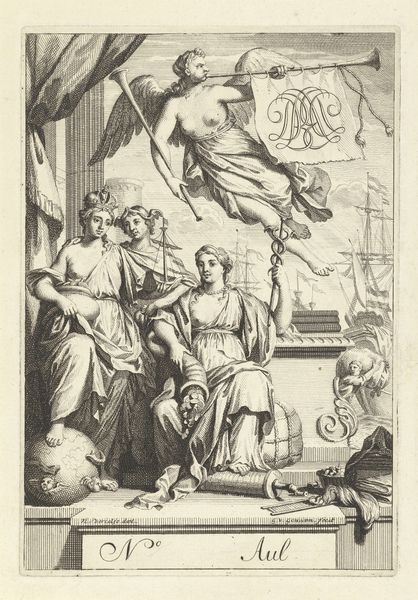
Dimensions: height 141 mm, width 83 mm
Copyright: Rijks Museum: Open Domain
This print, made by Pieter Tanjé, depicts a portrait of Jean Baptiste Racine with a muse and Apollo. It provides an insight into the cultural values of 18th-century Europe. Created during the Enlightenment, it is an allegorical portrayal of Racine, a prominent French dramatist, being crowned by a muse in the presence of Apollo, the god of arts and knowledge. The image invokes classical antiquity, a common practice in that period, and positions Racine within the lineage of great thinkers and artists. This was a time when academies played a crucial role in shaping artistic tastes and when artists sought to gain recognition by aligning themselves with historical and mythological figures. To better understand this, we could delve into the historical context of academies and the social status of artists during that time. By studying period literature and art criticism, we can gain insights into the institutional frameworks that shaped artistic production and consumption. Ultimately, art's meaning is contingent on social and institutional contexts.
Comments
No comments
Be the first to comment and join the conversation on the ultimate creative platform.
